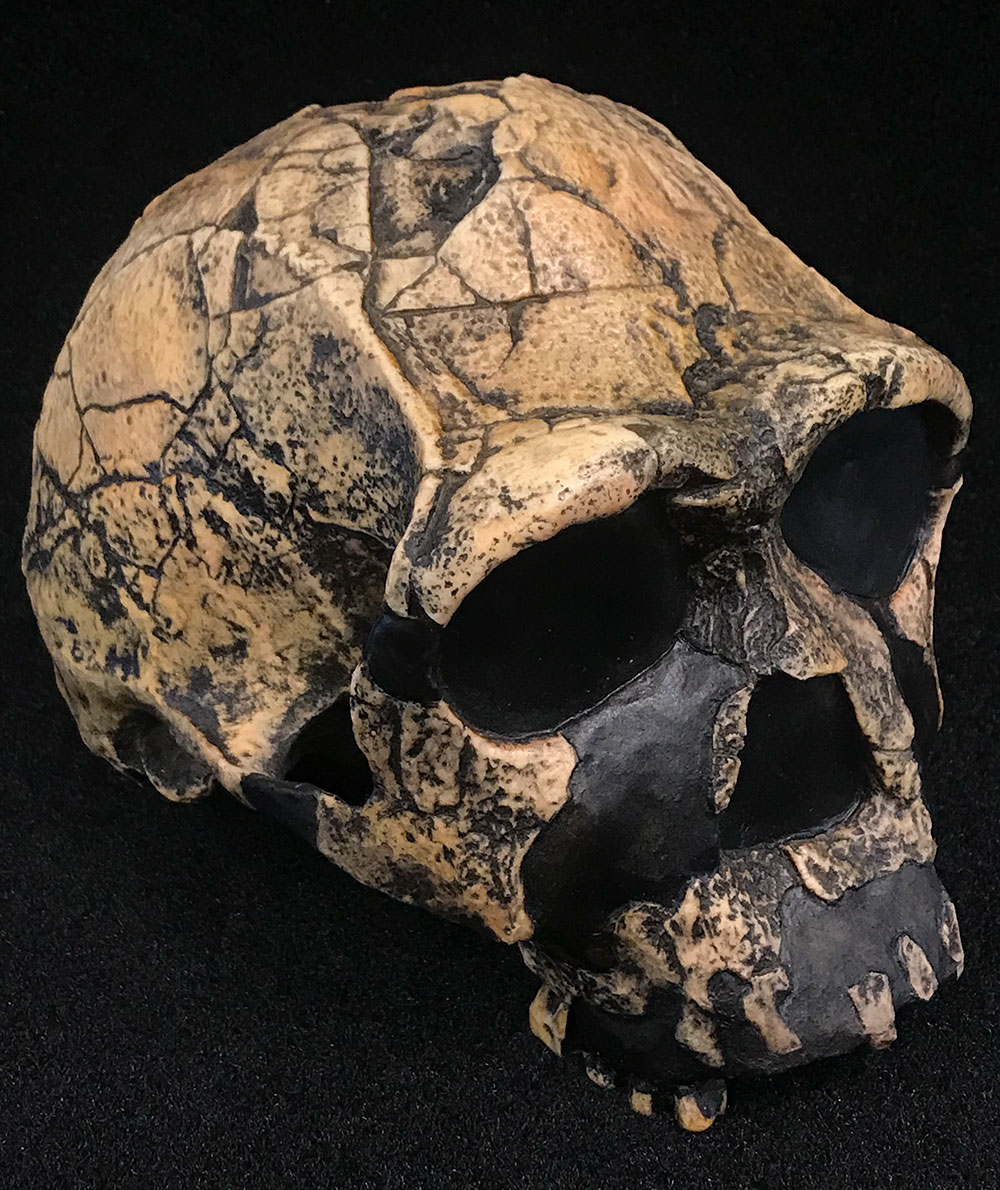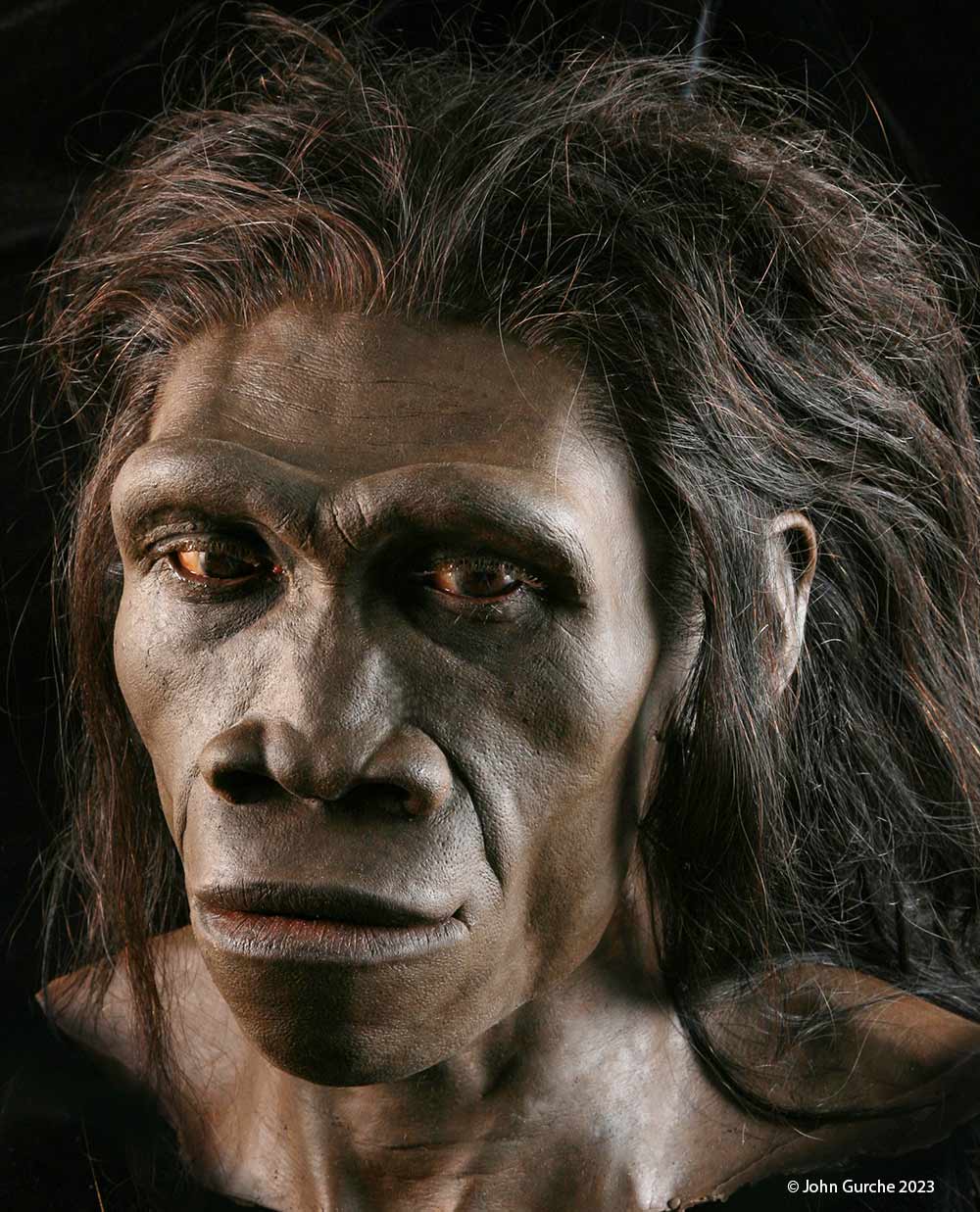Homo erectus
Cranium KNM-ER 3733 - 1.75 Million Years Ago


The Homo ergaster cranium KNM-ER 3733 was discovered by B. Ngeneo in 1975 in Koobi Fora, Kenya, and described by R. Leakey in Nature in 1976. Several teeth are intact, but no mandible was ever found.
Of great significance is the fact that this skull was found in the same sediment layer that P. boisei KNM-ER 406 had been six years earlier, adding to the evidence against the single species hypothesis, the notion that only one hominin species existed at any time in history. Also known as Homo erectus, KNM-ER 3733 is said to be very similar in appearance to the H. erectus finds of Peking, China, with a cranial capacity of 850 cc, keeling of the cranium, and the presence of an occipital torus. Gracile features, wear on teeth, and closure of cranial sutures suggest this individual was a mature female.
Read more Australian Museum's Homo ergaster and the synonymous Homo erectus species designation
- Hominin Skulls - Select a Species
- Ardipithecus kadabba
- Ardipithecus ramidus
- Australopithecus afarensis
- Australopithecus africanus
- Australopithecus anamensis
- Australopithecus garhi
- Australopithecus sediba
- Denisovans
- Homo antecessor
- Homo erectus
- Homo floresiensis
- Homo habilis
- Homo heidelbergensis
- Homo naledi
- Homo neanderthalensis
- Homo rudolfensis
- Homo sapiens
- Kenyanthropus platyops
- Ororrin tugenensis
- Paranthropus aethiopicus
- Paranthropus boisei
- Paranthropus robustus
- Sahelanthropus tchadensis

